It was the seventies and sequels were becoming “the thing” in the film industry. Odd because they had existed since the beginnings of the sound era, be it with the serial films, the Universal monster series, the Tarzan franchise, sequels had always been with us. In the seventies, 20th Century Fox had beaten to death their Planet of the Apes series, each progressively weaker. So, as much as they might be popular with audiences they could terrify directors, who often refused to be involved.
When Paramount approached Francis Ford Coppola about a sequel to his Oscar winning The Godfather (1972) he initially balked, not believing he had anything more to say. But when they offered him complete artistic freedom to make the film he wanted, and a boatload of money, he returned to the book and found a story he wanted to tell.
Sequestered with Mario Puzo, author of the book, co-writer of the first script, they pounded out Part II and began casting. Brando initially agreed to do a cameo in the film, then backed out, and Richard Castellano, Clemenza of the first film, wanted far too much money to repeat his role, so Coppola wrote him out, replacing him with a similar character, Frankie Pentangeli, who would become more popular than Clemenza.
Coppola told two stories with this film, the continuation of Michael ten years later in Vegas, having consolidated his power in a North America, and through flashback, telling us how his father, Vito came to power in the teens. The breathtaking broken narrative worked like a dream, the performances were exquisite, the intimacy and scope of the film was astounding, it was and remains flawless. With that said, here are the 10 things that made ‘Godfather Part II’ arguably the greatest American film ever.
1. The Extraordinary Vision of Francis Ford Coppola
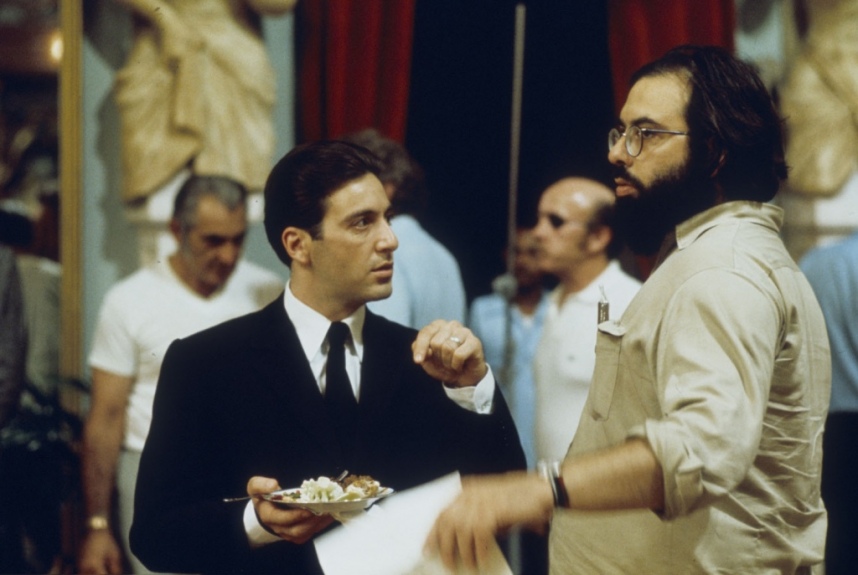
The extraordinary vision of Coppola was evident in the first film when he took a pulp novel and turned it into a stunning statement about America. He took the American Dream and turned into a perversity, an immigrant arrives in America, penniless, and in order to feed his wife and children replaces the local Mafia chief and takes his position, amassing a fortune through crime. Over the course of the two films, the first and second we see the American Dream achieved through murder, and anything that needs to be done. He fought for and got the cast he wanted including Brando who was career dead at that point and Pacino who was a virtual unknown. For the second film he returned to the book, and in a broken narrative explored the rise of Vito Corleone, and consolidation of Michael’s overwhelming power at the cost of his marriage and older brother, murdered on his order. Coppola saw the chance to explore that absolute power corrupts with absolution, it can never be righted. He took risks and ever single one of them worked.
2. The Brilliance of Al Pacino

Placing this massive film on the shoulders of Pacino, still relatively new to movies was daring to say the least, but he responded with the finest internal performance ever given is even more remarkable. Coiled tight like a deadly rattlesnake, Michael watches and misses little, his eyes black and dead, like those of a shark. Portraying the character made the actor ill, so challenging was it to give such an internal, complex performance. The actor says little, moves only when necessary yet projects and more so radiates complete menace. With a look he withers those around him, and to gain insight into his extraordinary range pay attention to the flashback scene at the end his fathers birthday part. Smiling, friendly, still idealistic, his entire future ahead of him, he bears no resemblance to the lonely, isolated but all-powerful sitting alone in a chair on his estate. Stunning. Pacino deserved the Academy Award for this one of the screen’s greatest performances.
3. Young and Dynamic Robert De Niro
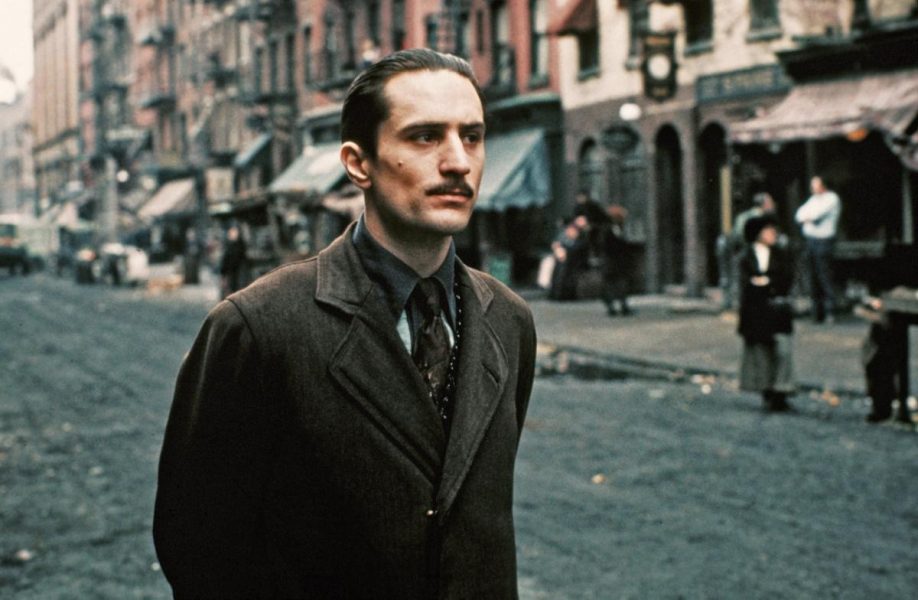
Imagine being young De Niro. You have just started to get roles in good films working with up and coming directors when you get a call from Coppola. He wants you to portray the younger version of one of the most iconic characters in film history, a role that won arguably the greatest actor of his time, Brando, the Academy Award for Best Actor. And he wants you to play the part, save two sentences in Sicilian, a language De Niro did not speak. Armed with copies of the first film, he accepted the role and headed to Sicily to absorb the culture and learn the language. He explored every move, each nuance of the Brando performance, mastering that raspy voice, but more the manner of commanding authority just by presence. It is a perfect performance, in every way suggesting the man Corleone will grow to become. De Niro won the Academy Award for Best Supporting Actor, richly deserved, which also served as an announcement that De Niro had arrived.
4. Cinematography of Gordon Willis
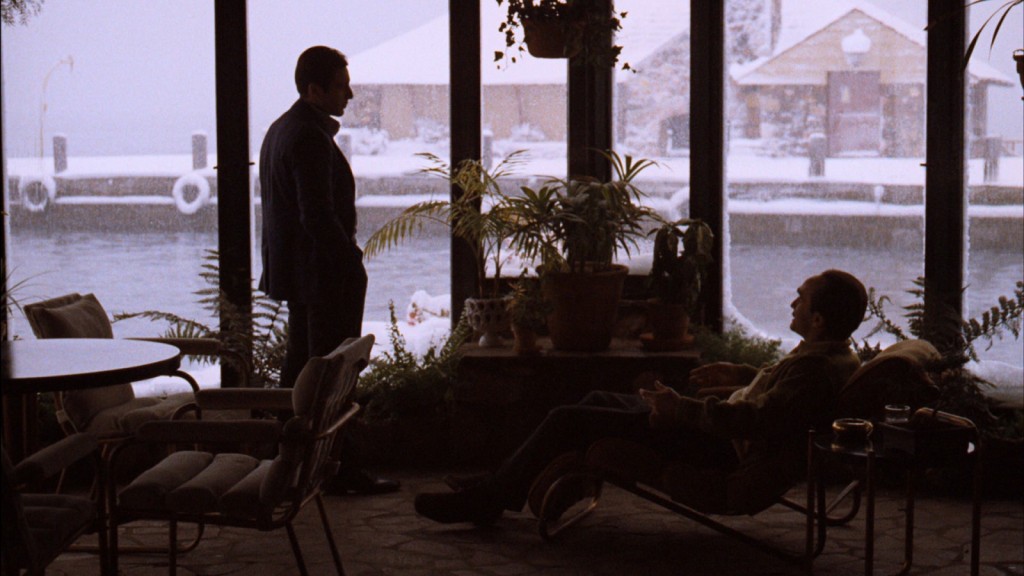
The Prince of Darkness shot some of the finest films of the seventies including The Godfather (1972) and Woody Allen’s Manhattan (1979) but his greatest achievement was this film, beautifully capturing the sun-kissed open spaces of Italy and Lake Tahoe as well as the dark rooms in which business takes place. His lighting of the scenes with De Niro in Part II are burnished, have almost sepia tone, like old photographs of the time, while his Tahoe sequences brim with sunlight, and night sequences by fire and candle. How he was not even nominated for the two films remains a grave injustice as they are two of the greatest achievements in Cinematography art.
5. Complexity and Global Appeal of the Story
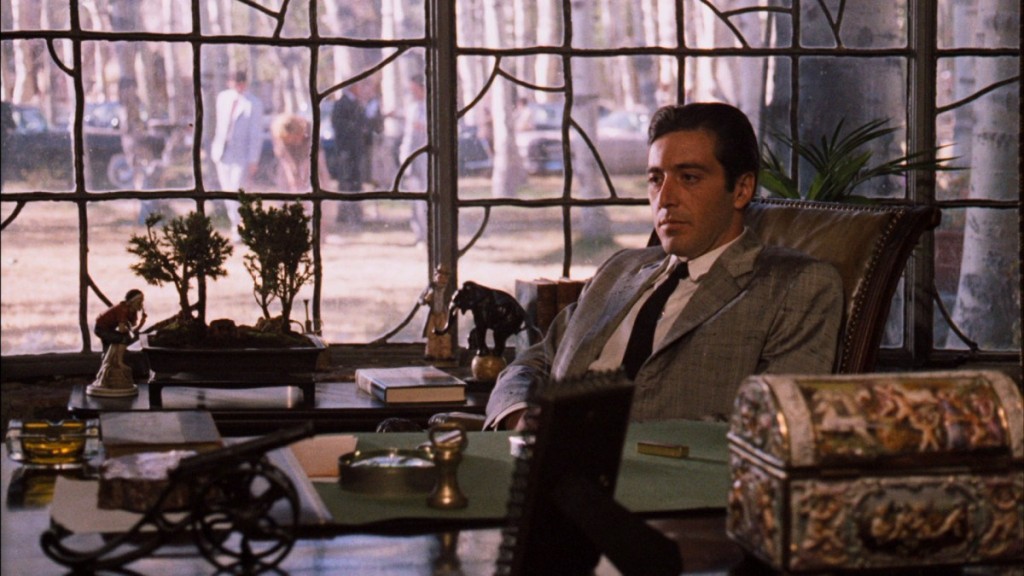
With barely contained arrogance and glee Hyman Roth (Lee Strasberg) tells Michael in Cuba “Mike, we’re bigger than US Steel.” The line brings a shocking perspective to the vast reach of the crime organization, their worth, and their own recognition of what they are. From humble beginnings in Little Italy before the 1920’s, through a consolidation of power in New York in the fifties, to global power in the late fifties, the story is a fascinating look at the growth of the mafia in America. And yet at its core it is the story of a father and son, locked in step through crime, one able to balance his power with his love for his family, the other, not, becoming dangerous and ruthless.
6. John Cazale
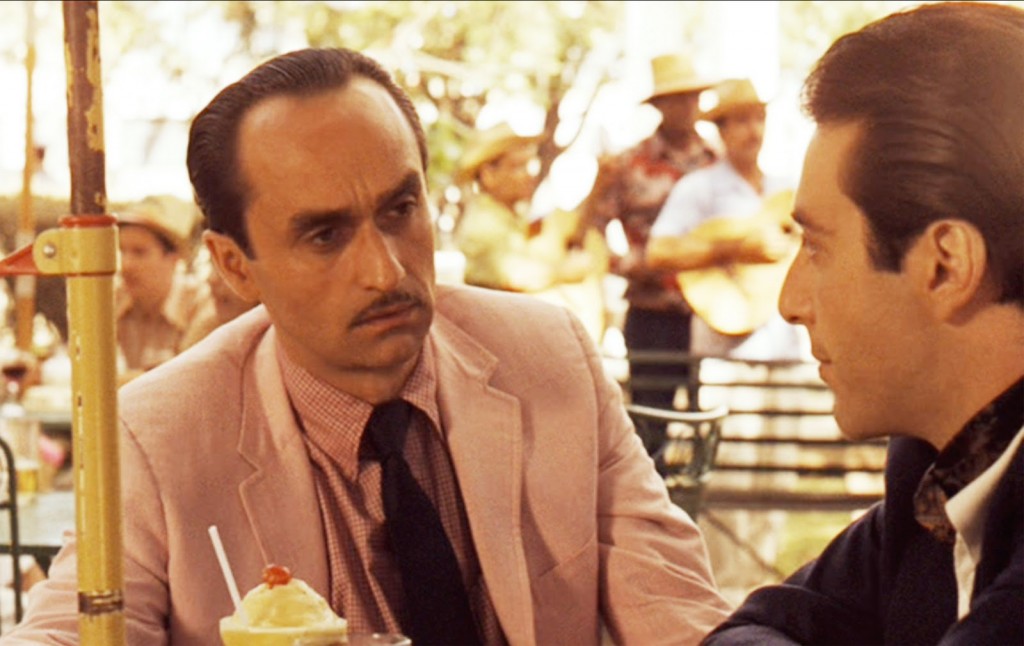
Broken, sad eyed Fredo found his place in the family but forever felt passed over and has been simmering with rage despite his love and loyalty to his younger brother Michael. When Roth came to him with a deal through Johnny Ola, never did Fredo think it would be an assassination on his brother. Fiercely loyal to his brother, but offered something for himself he grabs at it. It was a mistake, he knows it, Michael knows it, but Michael cannot let it go. The moment Michael kissed him in Cuba, Fredo was doomed and sadly he knew it.
7. Robert Duvall
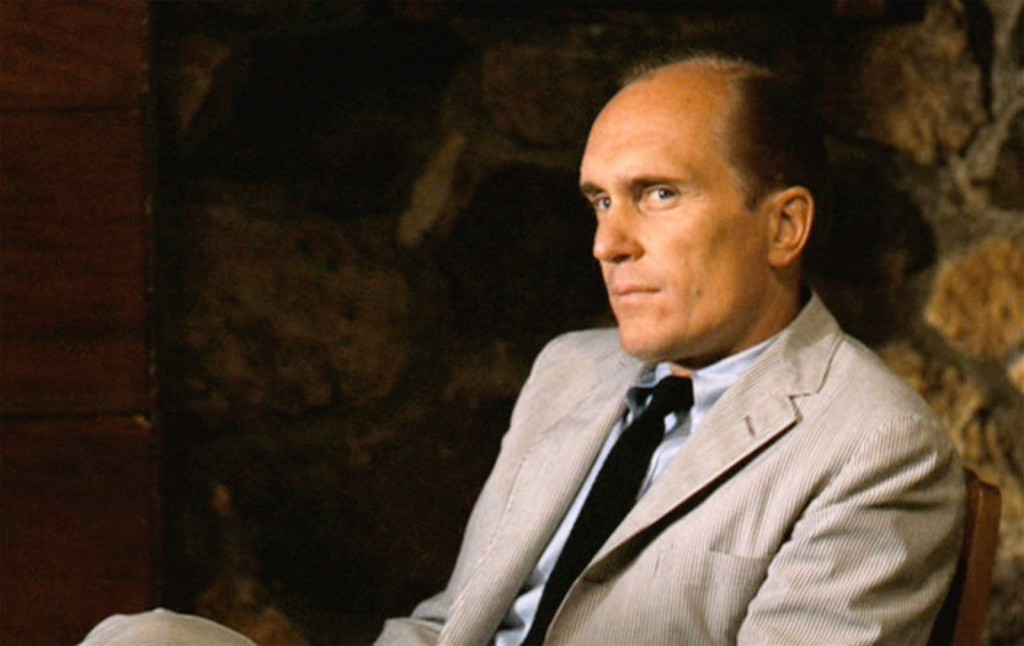
You gain insight to how much Duvall meant to the films by his absence in the third, never to be spoken of film. Squeezed out when Michael made his move to come to Vegas, Tom is not as involved in the business as he once was. However with the attempt on Michael’s life, he find Tom the only person he can really trust, and even though Tom displays complete loyalty to him, there are still lingering doubts. Duvall was superb in the role and his presence in that third, never to be spoken about third film, is noticeable.
8. The Universal Theme
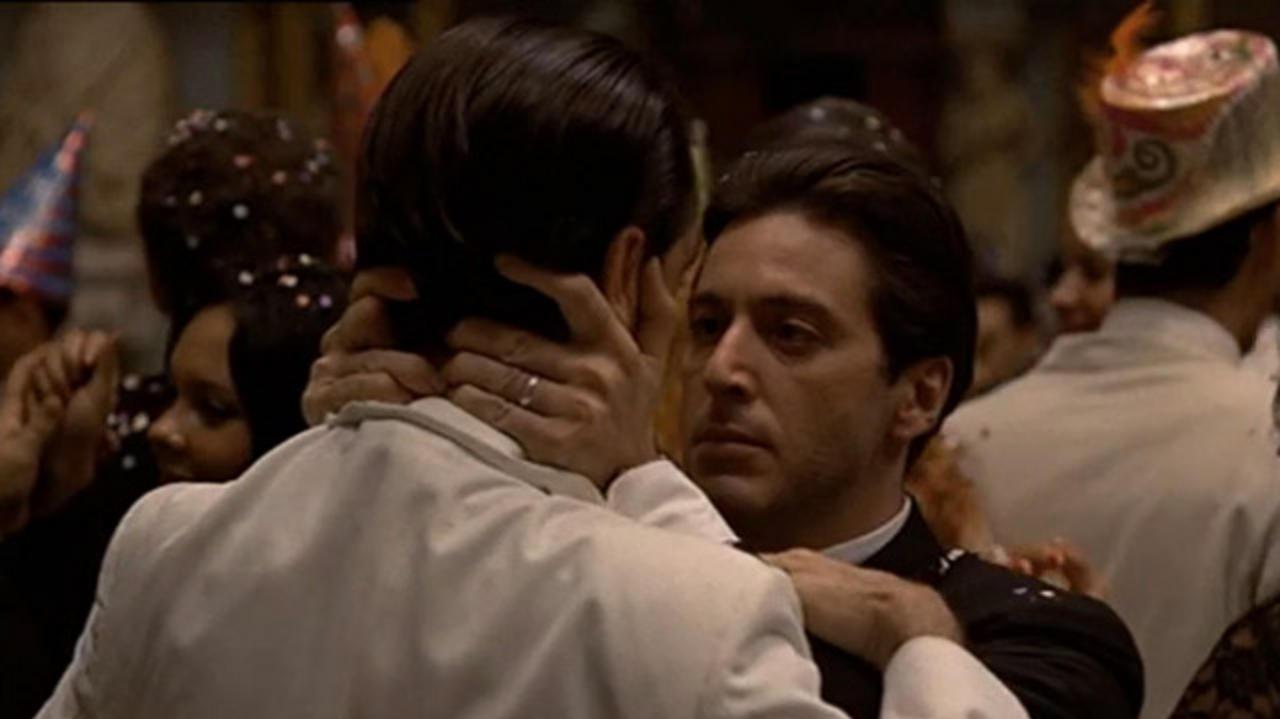
Absolute power corrupts absolutely is the central theme to the film, this time less about America. Yet it is also about family, betrayal, moral corruption and moral decay, as we see the terrible price Michael has paid for his role as head of the Corleone family. Alone and isolated at the end, with only memories of those he loved, most of them gone, it is a haunting autumnal film about regret and loss, choices, and right and wrong.
9. The Amazing Score

Combining intimacy with a bold, sweeping theme, Carmine Coppola richly deserved his Oscar for scoring his son’s greatest film. Using elements of the score from the first film, Coppola created a lush romantic score, but one that suggests danger, menace. One of the great film scores of all time, and an Oscar winner.
10. Lee Strasberg and Michael V. Gazzo
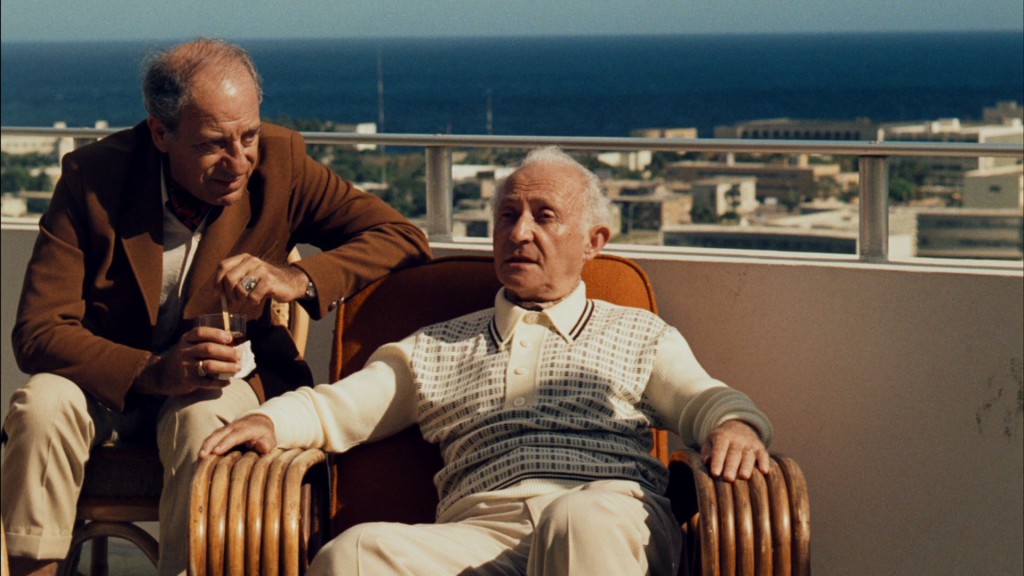
Strasberg, best known as the guru of method acting, revered by some of his students, was cast as Hyman Roth a character based on Meyer Lansky. A Jew in the world of Italians he is cunning and hides behind the facade of being a sick old man dying, but in fact he is as deadly as Michael. It is Roth who puts the hit on Michael, using Fredo to so, it is Roth who brings Michael to Cuba. The old acting teacher was superb in the film, earning an Oscar nomination for supporting actor, richly deserved. When Richard Castellano wanted a ridiculous amount of money to return as Clemenza, Coppola simply killed him off, created another character Frankie Pentangeli, who worked for Clemenza and has taken his place. He hates Roth, wants him dead, because he believes that Roth killed Clemenza, and is angry Michael will not move on Roth. He makes a huge mistake turning on Michael, but is permitted to fix that wrong and ensure his family will be taken care of. A playwright, Gazzo has a likeable screen presence with his raspy, gravelly voice and he too was nominated for supporting actor. Each enriched the film enormously.
Read More: Movies Like Godfather

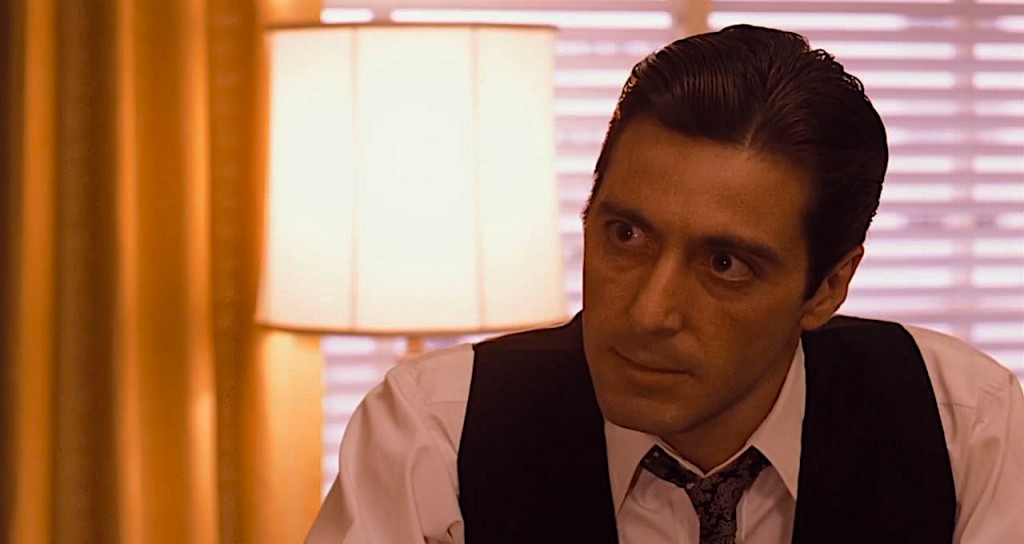
You must be logged in to post a comment.